Chisel it open
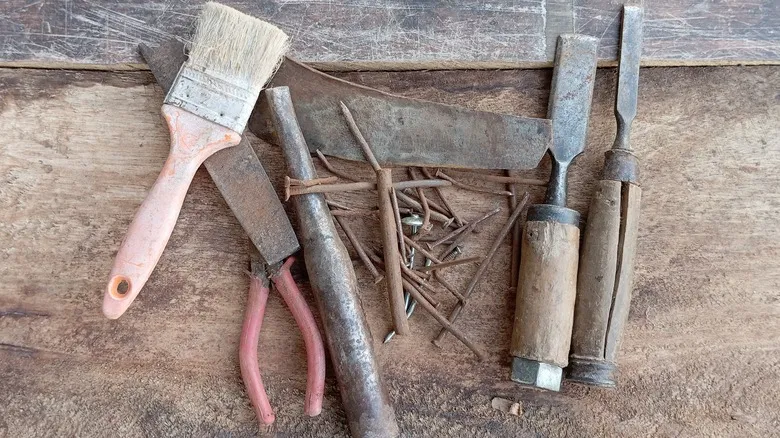
Before the invention of can openers in the 1850s, most people relied on a chisel and hammer to open their cans. This method was actually recommended by the manufacturers, which is understandable given that early cans were extremely thick, making them much more difficult to open than the cans we use today.
Although the hammer-and-chisel technique was effective, it wasn't particularly convenient. It demanded considerable physical strength and required having a hammer and chisel readily available. Consequently, thick, heavy cans weren't very popular among the general public. When they were first introduced, workers could produce only six cans per hour, making them somewhat rare. By the time these cans hit the market, can openers were already available in some form, so most people never had to resort to using a hammer and chisel. However, if you ever find yourself without a can opener but have a chisel and hammer on hand, you can always go back to the original method of opening a can.
Pop its top with a metal spoon
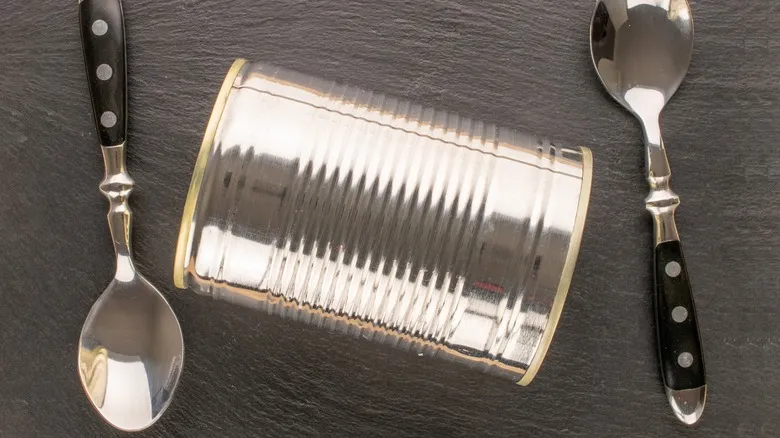
One of the most common methods for opening a can without a can opener is by using a spoon. To do this effectively, you'll need a sturdy metal spoon, ideally a table or dinner spoon, as these are the larger types typically found in cutlery sets. Avoid using plastic or wooden spoons, as they won't be sharp enough for this task.
Hold the spoon so that your pinky and ring fingers wrap around the top of the bowl—the curved part where the food rests. Your middle and index fingers should grip the stem, just above the bowl. With your other hand, keep the can upright and steady, preferably on a solid surface. Next, position the tip of the spoon against the inner rim of the can's lid. Apply pressure and rub the spoon back and forth to create a groove. This will form a weak point, and if you maintain the pressure, the spoon will eventually break through the can. Continue working the spoon around the inner rim of the lid until you can pop it open.
While this technique is not as straightforward as using a can opener, it is still relatively easy. However, exercise caution; like many alternative methods for opening cans, this one can leave sharp edges that may cause deep cuts if you're not careful.
Puncture it with a pocket knife
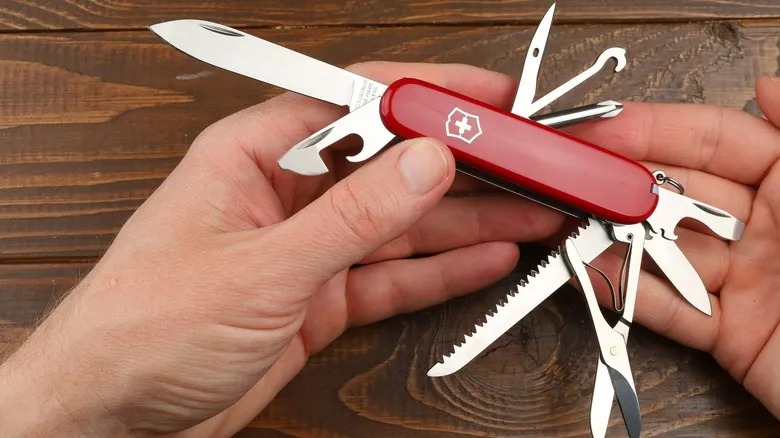
The pocket knife technique for opening cans is quite simple, but there are actually two approaches you can take based on the type of pocket knife you possess. If you own a multitool pocket knife, such as a Swiss Army knife, it may include a dedicated can opener tool. For more basic pocket knives, however, you'll need to puncture the top of the can.
The can opener tool found on Swiss Army-style knives resembles the original can opener design. It features a pointed blade with a cutout in the center of the bottom. The portion of the cutout nearest the base is shaped like the letter C, forming a pointed hook, while the other side has a sharp, acute angle. To open a can with this blade, position the sharp, angled part along the inside rim of the can and the hook against the bottom of the outside rim. Apply pressure to puncture the top, using the hook for leverage, and continue around the can.
For a standard pocket knife or even a small, sharp kitchen knife, such as a paring knife, the technique is slightly different but still straightforward. Align the tip of the blade with the inside rim and carefully puncture the top. Then, cut along the inside rim. Again, exercise caution, as these methods can result in jagged edges.
Sand down the edge with a rock

Using a spoon or knife to open a can is certainly effective, but what if you find yourself without any tools? Even if you're lost in the wilderness or stuck on a deserted island, you still have options for opening a can of food (though getting rescued might be a different story).
To make this method work, you'll need a large rock or a concrete slab nearby—essentially, something rough on the ground. Instead of smashing the can, start by turning it upside down. Then, vigorously rub the top of the can against the rock or concrete. It may take a minute or two, but eventually, you'll wear down the edge enough to break the seal and remove the lid. Just be cautious not to spill the contents when you lift it!
While this technique may not be the most efficient or hygienic if you have other tools available, it can be a useful option in a survival situation. It only takes a few minutes and doesn't leave behind sharp, jagged edges like many other methods. That said, it might be a good idea to check that you have a can opener in your survival food kit.
Use a chef's knife like a lever
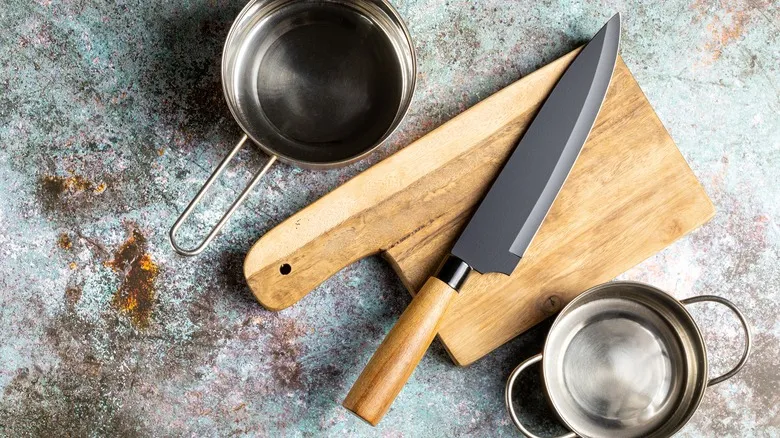
Chef's knives are large, versatile tools primarily designed for slicing and chopping, but they can also be used to open cans—albeit in a different manner than a pocket knife. While a small knife can easily puncture the top of a can, using a chef's knife may prove more challenging due to its size, making it harder to maneuver around the rim.
To open a can with a chef's knife, instead of using the tip, you'll utilize the heel, which is the lower, often squared-off part of the blade near the handle. With the knife in your dominant hand, secure the can with your other hand on a stable surface. Press the heel of the blade into the top of the can along the inner rim until it breaks through the metal. Gently rock the knife to enlarge the opening, then continue this technique around the entire can.
This method of using a chef's knife to open a can can be completed in just a minute or two, but it requires careful execution. Not only does this approach leave a jagged edge on the can, but a single misstep with the knife could result in injury. Take your time, ensuring you maintain full control of the knife and keep your fingers clear of the blade.
Hammer it with a flathead screwdriver
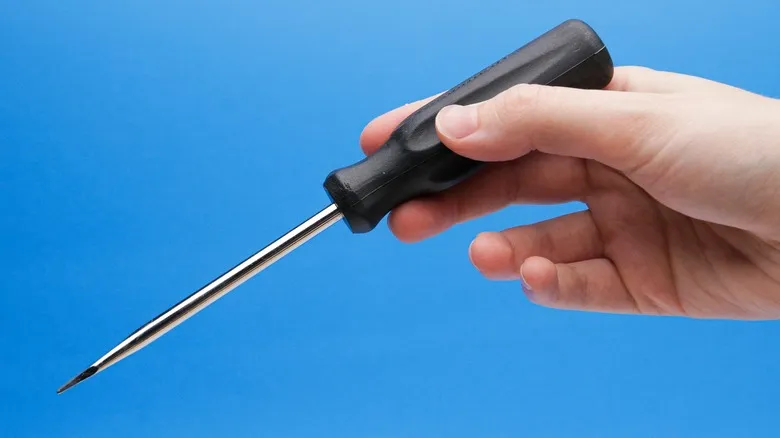
While there's nothing inherently wrong with the traditional method of opening cans using a hammer and chisel, most people don’t typically have chisels available at home. Hammers, sure, but not chisels. Fortunately, you can substitute a chisel with a flathead screwdriver.
To open a can using this technique, start by placing it on a flat, stable surface. If possible, have someone hold the can steady for added support. Grip the screwdriver in your non-dominant hand and position the flathead so that the tip is upright against the lid and flush with the sides. Then, use a hammer to gently tap the end of the handle, similar to how you would use a chisel. Once you’ve punctured the top, continue working your way around the edge until the lid is free.
Depending on your strength (and the durability of your flathead screwdriver), you might be able to open the can without a hammer. Simply wedge the flathead along the edge and strike the handle with the palm of your hand instead. This method may be a bit more challenging and less comfortable, but it’s a viable alternative if you have a screwdriver on hand but no hammer.
Wear through the top with a fork handle
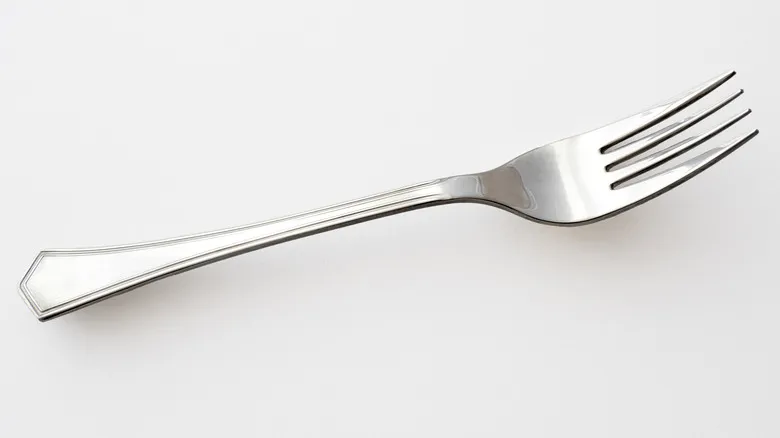
We’ve previously discussed how to open cans using spoons and knives, so now let’s explore how to do it with a fork. While forks may have once been viewed as sacrilegious, they are now essential tools in most kitchens and dining areas. If you find yourself without a can opener but have a fork on hand, you can still manage to open your can.
This technique is quite similar to the one using a spoon. Any metal fork will suffice, but it’s important that the entire fork is made of metal, including the handle. You’ll use the tip of the handle to weaken the lid of the can. Turn the fork upside down so that the end of the handle presses against the top of the can along the inner rim. Move the fork back and forth rapidly in one spot until the metal becomes thin. Then, flip the fork over and use the tines to puncture the top, continuing to cut around the edge. Wearing gloves can make this process easier, providing a better grip and protecting your hands.
Pierce the top with fork tines

There is an alternative method to use fork tines for opening a can, though it is a bit more complicated. This technique takes more time than the previous one, but it can be effective in a pinch, especially if your fork's handle is made from a non-metal material.
Start by positioning the fork upright over the can, with one tine resting on the inner edge and the other three tines on the outer edge. Then, strike the fork's handle with your hand or a tool like a hammer or rock, much like you would with a flathead screwdriver. Once you create a puncture in the lid, continue to work your way around, making additional holes as you go. Keep in mind that this method may damage your fork, so if it's your only one or holds sentimental value, you might want to reconsider using it.
Cut through it with scissors
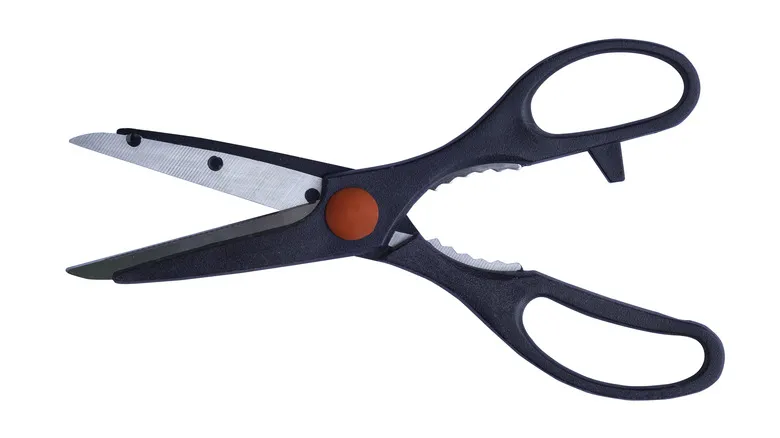
Scissors are a common tool found in nearly every home, unless you have kids, in which case they always seem to be missing when you need them. If you find yourself without a can opener, scissors can serve as a handy alternative for opening cans.
Both regular scissors and kitchen shears can effectively be used for this method, which is quite similar to using a small knife. To start, open the scissors and position one blade along the inner edge of the can's lid. Gently tap it against the inner rim to create a puncture. Be patient, as it may take a few attempts. Once you've made a hole, carefully cut along the inside of the can's edge until the top is removed. This process may require some adjustments, but you should be able to open the can within a few minutes. Keep in mind that, like with other methods, this can leave a sharp edge, so handle it with care.
Stab it with needle nose pliers
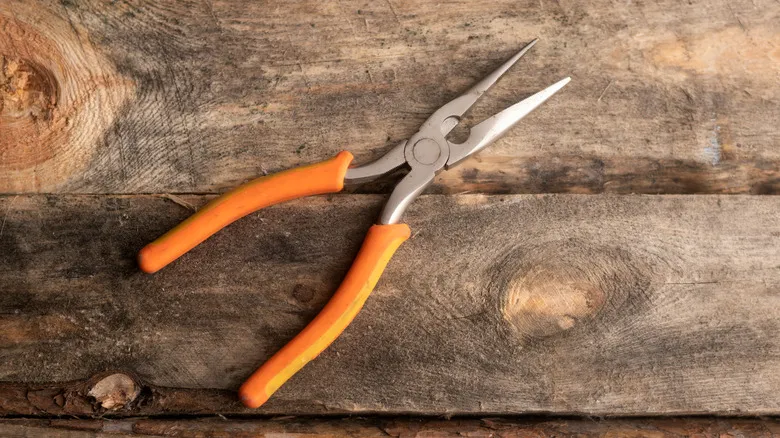
In a toolbox, you will usually find a pair of pliers. One of the most popular varieties is needle nose pliers, which feature long, pointed jaws that can navigate into tight spaces. They are versatile tools, useful for tasks like handling wires and crafting jewelry. Interestingly, you can even use pliers to pit a peach. Additionally, if your can opener is missing, needle nose pliers can help you open a can.
This technique is similar to several others on this list, relying on a combination of a sharp edge and physical force. Place the can on a flat, stable surface, keep the pliers closed, and use the tip to puncture the lid. Once you've created a sufficiently sized hole, you can use the pliers to grip the edges of the lid and either pull it off completely or bend it back enough to reach the contents inside.
Slice the lid with a pizza cutter
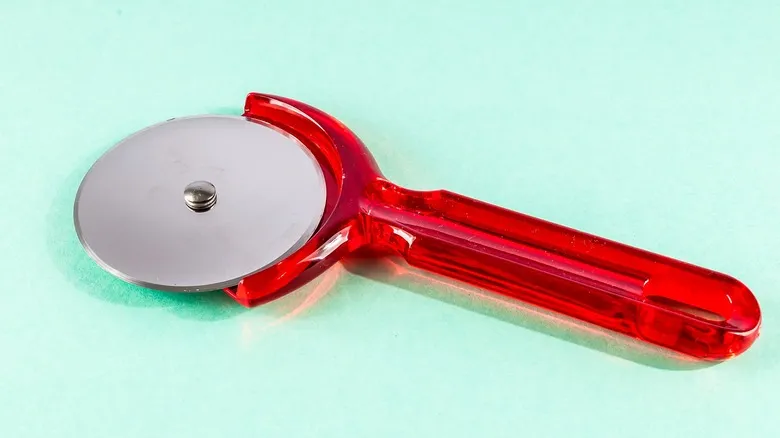
Perhaps your kitchen is typically well-stocked, but your can opener has broken, and you haven't had the opportunity to replace it. In that situation, you might have a pizza cutter on hand that can serve as an alternative.
While it may not be the most attractive, safest, or simplest method for opening a can, it can work in a pinch. First, ensure you have a stable, flat surface to place the can on. Use your nondominant hand to hold the can steady while gripping the pizza cutter with your dominant hand. Move the cutter back and forth across the top of the can, creating an X-shape by cutting in one direction and then the other. It may take a little time, but once you've made it through, you can use the edge of the pizza cutter to lift the lid and peel it back further.
Exercise caution with this technique, as the edges of the can will be sharp, and the pizza cutter could easily cut your hand or fingers if you're not careful. Additionally, if you decide to try this method, it would be wise to sharpen your pizza cutter afterward.
Recommended

The Key To Smoother Cheese Sauce Might Be In Your Medicine Cabinet

A Spoonful Of Water Is Your Secret Weapon For Reheating Pizza

Tom Colicchio's Pro Tip For Extra Creamy Scrambled Eggs Without Dairy

Why You Should Always Strain Store-Bought Ricotta Before Using It
Next up

